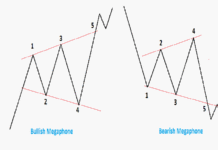
When trading stocks, it’s essential to have a well-rounded understanding of the company and its stock. Fundamental analysis involves evaluating a company’s financial health and its prospects for future growth. Here are six fundamental indicators to consider when trading stocks:
Earnings Per Share (EPS):
EPS is the company’s net profit divided by the number of outstanding shares. It indicates how much profit a company generates per share and is a crucial measure of profitability. Investors often look for consistent or increasing EPS over time.
Price-to-Earnings (P/E) Ratio:
The P/E ratio compares the stock’s current market price to its earnings per share. It provides insight into whether a stock is overvalued or undervalued. A high P/E ratio may indicate an overvalued stock, while a low P/E ratio might suggest undervaluation.
Price-to-Sales (P/S) Ratio:
The P/S ratio measures a company’s market capitalization (stock price multiplied by the number of shares outstanding) against its total revenue. It helps assess a company’s valuation relative to its sales. Lower P/S ratios may indicate better value, but it’s essential to consider industry norms.
Price-to-Book (P/B) Ratio:
The P/B ratio compares a company’s market value to its book value (total assets minus total liabilities). It provides insight into how the market values a company’s assets. A P/B ratio below 1 might suggest the stock is undervalued.
Dividend Yield:
If you’re interested in income generation, consider a company’s dividend yield. It’s the annual dividend payment divided by the stock’s current price. A higher dividend yield can be attractive for income investors, but it’s crucial to assess the sustainability of dividends.
Debt-to-Equity (D/E) Ratio:
This ratio measures a company’s financial leverage by comparing its total debt to shareholders’ equity. A high D/E ratio may indicate higher financial risk, as it suggests the company relies heavily on debt to finance its operations. Lower D/E ratios are generally preferable.
It is essential to consider qualitative factors such as a company’s competitive position, industry trends, management quality, and growth prospects. Combining both quantitative (numerical) and qualitative analysis can provide a more comprehensive view of a stock’s potential.
Remember that no single indicator should be used in isolation when making trading decisions. A holistic approach, combining multiple fundamental and technical indicators, along with a well-thought-out trading strategy, is advisable for successful stock trading. Additionally, staying informed about current news and events that may impact the company or industry you’re interested in is crucial for making informed decisions.
Related Post:
Stock and CFD market analysis




























